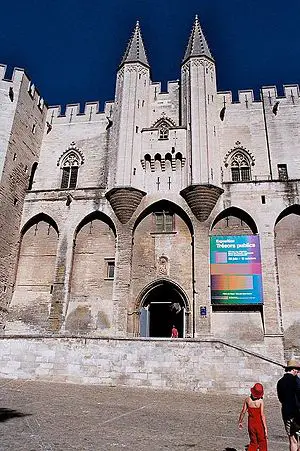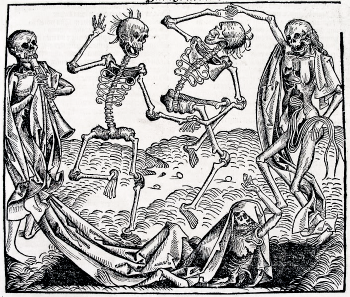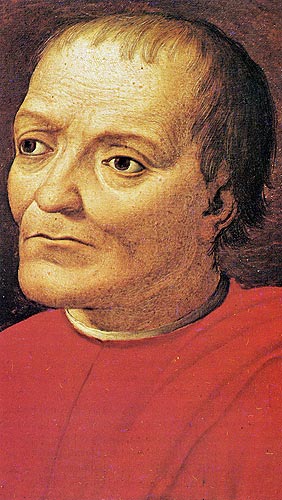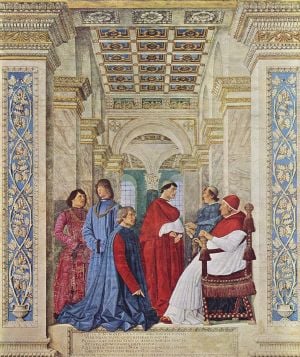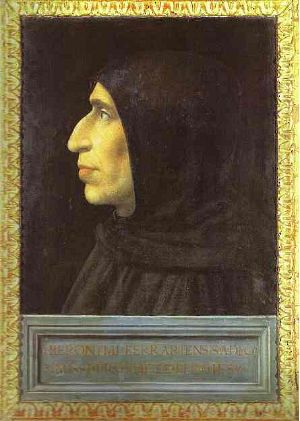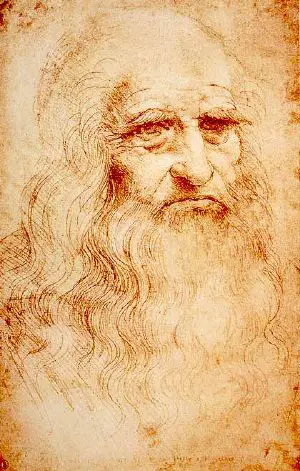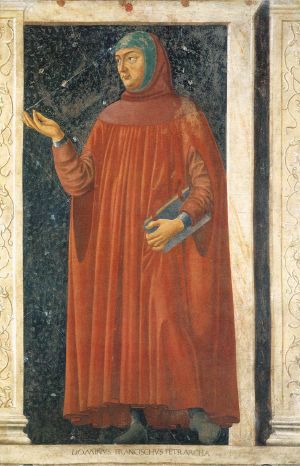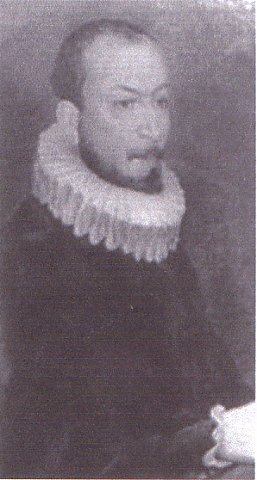Italian Renaissance
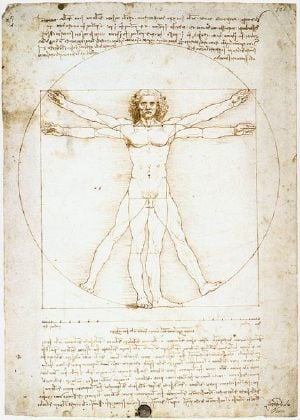
The Italian Renaissance began the opening phase of the Renaissance, a period of great cultural change and achievement in Europe that spanned the period from the end of the fourteenth century to about 1600, marking the transition between Medieval and Early Modern Europe.
The word renaissance in French, (rinascimento in Italian) literally means ârebirth,â and the era is best known for the renewed interest in the culture of classical antiquity following the period that Renaissance humanists labeled the Dark Ages. However, the use of term renaissance is modern, not coming into currency in the nineteenth century, in the work of historians such as Jacob Burckhardt.
The Italian Renaissance began in Tuscany, centered in the cities of Florence and Siena. It later had a significant impact in Venice, where the remains of ancient Greek culture provided humanist scholars with new texts. The Italian Renaissance peaked in the late-fifteenth century as foreign invasions plunged the region into turmoil. However, the ideas and ideals of the Renaissance spread into the rest of Europe, setting off the Northern Renaissance centered in Fontainebleau and Antwerp, and the English Renaissance.
The Italian Renaissance is best known for its cultural achievements. They include works of literature by such figures as Petrarch, Castiglione, and Machiavelli; works of art by artists such as Michelangelo and Leonardo da Vinci; and great works of architecture, such as The Duomo in Florence and St. Peter's Basilica in Rome.
Socio-economic Background
By the late Middle Ages, central and southern Italy, once the heartland of the Roman Empire, was far poorer than the north. Rome was a city largely in ruins, and the Papal States were a loosely administered region with little law and order. Partially because of this, the papacy had relocated to Avignon, a papal enclave in France. The southern cities of Naples, Sicily, and Sardinia had for some time been under foreign domination.
The north was far more prosperous, with the states of northern Italy among the wealthiest in Europe. The Crusades had built lasting trade links to the Levant, and the Fourth Crusade had done much to destroy the Byzantine Empire as a commercial rival to Venice and Genoa. Thus, while northern Italy was not richer in resources than many other parts of Europe, its level of development, stimulated by trade, allowed it to prosper. Florence became one of the wealthiest cities of the region.
The Italian trade routes that covered the Mediterranean and beyond were also major conduits of culture and knowledge. In medieval times, works that embodied the classical learning of the Greeks had trickled into Western Europe, through Arab translations and treatises, from Toledo and from Palermo. The Crusades led to some European contact with classical learning, preserved by Arabs, but more important in this regard was the Reconquista of Moorish Spain during the fifteenth century and the resulting translations of Arabic-language works by the School of Salamanca. From Egypt and the Levant, the scientific, philosophical, and mathematical thinking of the Arabs entered Northern Italy.
In the thirteenth century, Europe in general was experiencing an economic boom. The city-states of Italy expanded greatly during this period and grew in power to become de facto fully independent of the Holy Roman Empire. During this period, the modern commercial infrastructure developed, with joint stock companies, an international banking system, a systematized foreign exchange market, insurance, and government debt. Florence became the center of this financial industry and the gold florin became the main currency of international trade.
The decline of feudalism and the rise of cities influenced each other; for example, the demand for luxury goods led to an increase in trade, which led to greater numbers of tradesmen becoming wealthy, who, in turn, demanded more luxury goods. This change also gave the merchants almost complete control of the governments of the Italian city-states, again enhancing trade.
The fourteenth century saw a series of catastrophes that caused the European economy to go into recession. Climate change caused the agricultural output to decline significantly, leading to repeated famines, exacerbated by the rapid population growth of the earlier era. The Hundred Years' War between England and France disrupted trade throughout northwest Europe. In the east, war was also disrupting trade routes, as the Ottoman Empire began to expand throughout the region. Most devastating, though, was the Black Death that decimated the populations of the densely populated cities of Northern Italy and returned at intervals thereafter. Florence, for instance, which had a pre-plague population of 45,000, decreased over the next 47 years by 25 to 50 percent.
It was during this period of instability that the first Renaissance figures, such as Dante and Petrarch lived. Also, the first stirrings of Renaissance art were to be seen in the opening half of the fourteenth century, notably in the realism of Giotto. Paradoxically, some of these disasters would help establish the Renaissance. The Black Death wiped out a third of Europe's population, and the new smaller population was much wealthier, better fed, and had more surplus money to spend on luxury goods like art and architecture. Additionally, the collapse of older banking families opened the way for the Medici to rise to prominence in Florence.
Development of the Renaissance
Northern Italy was divided into a number of warring city-states, the most powerful being Milan, Florence, Pisa, Siena, Genoa, Ferrara, and Venice. High Medieval Northern Italy was further divided by the long running battle for supremacy between the forces of the Papacy and of the Holy Roman Empire: each city aligned itself with one faction or the other, yet was divided internally between the two warring parties, Guelfs and Ghibellines. Warfare between the states was common, invasion from outside Italy confined to intermittent sorties of Holy Roman Emperors. Renaissance politics developed from this background. Since the thirteenth century, as armies became primarily composed of mercenaries, prosperous city-states could field considerable forces, despite their low populations. In the course of the fifteenth century, the most powerful city-states annexed their smaller neighbors. Florence took Pisa in 1406, Venice captured Padua and Verona, while the Duchy of Milan annexed a number of nearby areas including Pavia and Parma.
Florence under the Medici
In the late-fourteenth century, Florence's leading family had been the Albizzi. Their main challengers were the Medici, first under Giovanni de' Medici, then under his son Cosimo. The Medici controlled the Medici bankâthen Europe's largest bank, and an array of other enterprises in Florence and elsewhere. In 1433, the Albizzi managed to have Cosimo exiled. The next year, however, saw a pro-Medici Signoria elected and Cosimo returned. The Medici became the town's leading family, a position they would hold for the next three centuries. Florence remained a republic until 1537, traditionally marking the end of the High Renaissance in Florence, but the instruments of republican government were firmly under the control of the Medici and their allies, save during the intervals after 1494 and 1527. Cosimo and Lorenzo only rarely held official posts, but were the unquestioned leaders.
Cosimo de' Medici was highly popular among the citizenry, mainly for bringing an era of stability and prosperity to the town. One of his most important accomplishments was negotiating the Peace of Lodi with Francesco Sforza ending the decades of war with Milan and bringing stability to much of Northern Italy. Cosimo was also an important patron of the arts, directly and indirectly, by the example he set. Cosimo was succeeded by his sickly son Piero de' Medici, who died after five years in charge of the city. In 1469, the reins of power passed to Cosimo's 21-year-old grandson Lorenzo, who would become known as "Lorenzo the Magnificent." Lorenzo was the first of the family to be educated from an early age in the humanist tradition and is best known as one of the Renaissance's most important patrons of the arts.
Beyond Northern Italy
Renaissance ideals first spread from Florence to the neighboring states of Tuscany such as Siena and Lucca. The Tuscan culture soon became the model for all the states of Northern Italy, and the Tuscan variety of Italian came to predominate throughout the region, especially in literature. In 1447, Francesco Sforza came to power in Milan and rapidly transformed that still medieval city into a major center of art and learning that drew Leone Battista Alberti. Venice, one of the wealthiest cities due to its control of the Mediterranean Sea, also became a center for Renaissance culture, especially architecture. Smaller courts brought Renaissance patronage to lesser cities, which developed their characteristic arts: Ferrara, Mantua under the Gonzaga, and Urbino under Federico da Montefeltro. In Naples, the Renaissance was ushered in under the patronage of Alfonso I who conquered Naples in 1443 and encouraged artists like Francesco Laurana and Antonello da Messina and writers like the poet Jacopo Sannazzaro and the humanist scholar Angelo Poliziano.
In 1378, the papacy returned to Rome, but that once imperial city remained poor and largely in ruins through the first years of the Renaissance. The great transformation began under Pope Nicholas V, who became pontiff in 1447. He launched a dramatic rebuilding effort that would eventually see much of the city renewed. The humanist scholar Aeneas Silvius Piccolomini became pope as Pius II in 1458. As the papacy fell under the control of the wealthy families from the north, such as the Medici and the Borgias, the spirit of Renaissance art and philosophy came to dominate the Vatican. Pope Sixtus IV continued Nicholas' work, most famously ordering the construction of the Sistine Chapel. The popes also became increasingly secular rulers as the Papal States were forged into a centralized power by a series of "warrior popes."
The nature of the Renaissance also changed in the late-fifteenth century. The Renaissance ideal was fully adopted by the ruling classes and the aristocracy. In the early Renaissance, artists were seen as craftsmen with little prestige or recognition. By the later Renaissance, the top figures wielded great influence and could charge great fees. A flourishing trade in Renaissance art developed. While in the early Renaissance many of the leading artists were of lower- or middle-class origins, increasingly they became aristocrats.
Wider population
As a cultural movement, the Italian Renaissance affected only a small part of the population. Northern Italy was the most urbanized region of Europe, but three quarters of the people were still rural peasants. For this section of the population, life was essentially unchanged from the Middle Ages. Classic feudalism had never been prominent in Northern Italy, with the peasants mostly working private farms or as sharecroppers. Some scholars see a trend towards refeudalization in the later Renaissance as the urban elites turned themselves into landed aristocrats.
In the cities the situation was quite different. They were dominated by a commercial elite, which was just as exclusive as the aristocracy of any Medieval kingdom. It was this group that was the main patron of, and audience for, Renaissance culture. Below them, there was a large class of artisans and guild members who lived comfortable lives and had significant power in the republican governments. This was in sharp contrast to the rest of Europe where artisans were firmly in the lower class. Literate and educated, this group did participate in the Renaissance culture. The largest section of the urban population was the urban poor of semi-skilled workers and the unemployed. Renaissance had little effect on them.
The Renaissance was thus not a period of great social or economic change, only of cultural and ideological development. It only touched a small fraction of the population, and in modern times this has led many historians, such as those that follow historical materialism, to reduce the importance of the Renaissance in human history. These historians tend to think in terms of "Early Modern Europe" instead.
End of the Italian Renaissance
The end of the Renaissance is as imprecisely marked as its starting point. For many, the rise to power in Florence of the austere monk Girolamo Savonarola in 1497 marks the end of the city's flourishing; for others, the triumphant return of the Medici marks the beginning of the late phase in the arts called Mannerism. Savonarola rode to power on a widespread backlash over the secularism and indulgence of the Renaissanceâhis brief rule saw many works of art destroyed in the "Bonfire of the Vanities" in the center of Florence. With the Medici returned to power, now as Grand Dukes of Tuscany, the counter movement in the church continued. In 1542 the Sacred Congregation of the Inquisition was formed and a few years later the Index Librorum Prohibitorum banned a wide array of Renaissance works of literature.
Just as important was the end of stability with a series of foreign invasions of Italy known as the Italian Wars that would continue for several decades. These began with the 1494 invasion by France that wreaked widespread devastation on Northern Italy and ended the independence of many of the city-states. Most damaging was the May 6, 1527, Spanish and German troops' sacking Rome that for two decades all but ended the role of the Papacy as the largest patron of Renaissance art and architecture.
While the Italian Renaissance was fading, the Northern Renaissance adopted many of its ideals and transformed its styles. A number of Italy's greatest artists chose to emigrate. The most notable example was Leonardo da Vinci who left for France in 1516. However, teams of lesser artists invited to transform the Château de Fontainebleau created the school of Fontainebleau that infused the style of the Italian Renaissance in France. From Fontainebleau, the new styles, transformed by Mannerism, brought the Renaissance to Antwerp, and then throughout Northern Europe.
This spread north was also representative of a larger trend. No longer was the Mediterranean Europe's most important trade route. In 1498, Vasco da Gama reached India, and from that date the primary route of goods from the Orient was through the Atlantic ports of Lisbon, Seville, Nantes, Bristol, and London. These areas quickly surpassed Italy in wealth and power.
Culture
Literature and poetry
The thirteenth-century Italian literary revolution helped set the stage for the Renaissance. It was only in the thirteenth century that Italian authors began writing in their native language rather than Latin, French, or Provençal. The 1250s saw a major change in Italian poetry as the Dolce Stil Novo (Sweet New Style, which emphasized Platonic rather than courtly love) came into its own, pioneered by poets like Guittone d'Arezzo and Guido Guinizelli. Especially in poetry, major changes in Italian literature had been taking place decades before the Renaissance truly began.
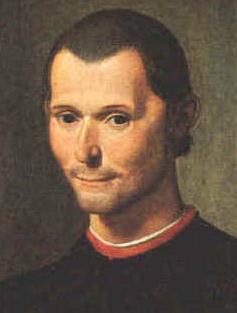
With the printing of books initiated in Venice by Aldus Manutius, an increasing number of works began to be published in the Italian vernacular, in addition to the flood of Latin and Greek texts that constituted the mainstream of the Italian Renaissance. The source for these works expanded beyond works of theology and towards the pre-Christian eras of Imperial Rome and Ancient Greece. This is not to say that no religious works were published in this period: Dante Alighieri's The Divine Comedy reflects a distinctly medieval worldview. Christianity remained a major influence for artists and authors, with the classics coming into their own as a second primary influence.
In the early Italian Renaissance, much of the focus was on translating and studying classic works from Latin and Greek. Renaissance authors were not content to rest on the laurels of ancient authors, however. Many authors attempted to integrate the methods and styles of the ancient greats into their own works. Among the most emulated Romans are Cicero, Horace, Sallust, and Virgil. Among the Greeks, Aristotle, Homer, and Plato were now being read in the original for the first time since the fourth century, though Greek compositions were few.
The literature and poetry of the Renaissance was also largely influenced by the developing science and philosophy. The humanist Francesco Petrarch, a key figure in the renewed sense of scholarship, was also an accomplished poet, publishing several important works of poetry. He wrote poetry in Latin, notably the Punic War epic Africa, but is today remembered for his works in the Italian vernacular, especially the Canzoniere, a collection of love sonnets dedicated to his unrequited love Laura. He was the foremost writer of sonnets in Italian, and translations of his work into English by Thomas Wyatt established the sonnet form in that country, where it was employed by William Shakespeare and countless other poets.
Petrarch's disciple, Giovanni Boccaccio, became a major author in his own right. His major work was the Decameron, a collection of 100 stories told by ten storytellers who have fled to the outskirts of Florence to escape the black plague over ten nights. The Decameron in particular, and Boccaccio's work in general, were a major source of inspiration and plots for many English authors in the Renaissance, including Geoffrey Chaucer and William Shakespeare.
Aside from Christianity, classical antiquity, and scholarship, a fourth influence on Renaissance literature was politics. The political philosopher Niccolò Machiavelli's most famous works are Discourses on Livy, Florentine Histories, and finally The Prince, which has become so well-known in Western society that the term "Machiavellian" has come to refer to the realpolitik advocated by the book.
Science and philosophy
One role of Petrarch is as the founder of a new method of scholarship, Renaissance Humanism. Humanism was an optimistic philosophy that saw man as a rational and sentient being, with the ability to decide and think for himself. This was an implicit rejection of the Roman Catholic Church's vision of souls as the only absolute reality, which was then seen as mystical and imaginary. Humanism saw man as basically good by nature, a stance which was in tension with the Christian view of man as the original sinner needing redemption. It provoked fresh insight into the nature of reality, questioning beyond God and spirituality, and provided for knowledge about history beyond Christian history.
Petrarch encouraged the study of the Latin classics and carried his copy of Homer about, at a loss to find someone to teach him to read Greek. An essential step in the humanist education being propounded by scholars like Pico della Mirandola was the hunting down of lost or forgotten manuscripts that were known only by reputation. He also incorporated Jewish learning, long detested by Christian writers, into his work. These endeavors were greatly aided by the wealth of Italian patricians, merchant-princes, and despots, who would spend substantial sums building libraries. Discovering the past had become fashionable and it was a passionate affair pervading the upper reaches of society. I go, said Cyriac of Ancona, I go to awake the dead.
As the Greek works were acquired, manuscripts found, libraries and museums formed, the age of the printing press was dawning. The works of Antiquity were translated from Greek and Latin into the contemporary modern languages throughout Europe, finding a receptive middle-class audience.
While concern for philosophy, art, and literature all increased greatly in the Renaissance the period is usually seen as one of scientific backwardness. The reverence for classical sources further enshrined the Aristotelian and Ptolemaic views of the universe. Humanism stressed that nature came to be viewed as an animate spiritual creation that was not governed by laws or mathematics. At the same time, philosophy lost much of its rigor as the rules of logic and deduction were seen as secondary to intuition and emotion.
It would not be until the Renaissance moved to Northern Europe that science would be revived, with such figures as Copernicus, Francis Bacon, and Descartes.
Sculpture and painting
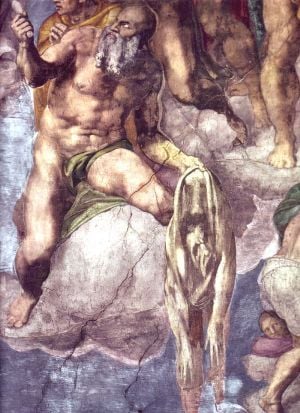
In painting, the false dawn of Giotto's realism, his fully three-dimensional figures occupying a rational space, and his humanist interest in expressing the individual personality rather than the iconic images, was followed by a retreat into conservative late-Gothic conventions. The Italian Renaissance in painting began anew, in Florence and Tuscany, with the frescoes of Masaccio then the panel paintings and frescoes of Piero della Francesca and Paolo Uccello began to enhance the realism of their work by using new techniques in perspective, thus representing three dimensions in two-dimensional art more authentically. Piero della Francesca even wrote treatises on scientific perspective.
The creation of credible space allowed artists to also focus on the accurate representation of the human body and on naturalistic landscapes. Masaccio's figures have a plasticity unknown up to that point in time. Compared to the flatness of Gothic painting, his pictures were revolutionary. At the turn of the sixteenth century, especially in Northern Italy, artists also began to use new techniques in the manipulation of light and darkness, such as the tone contrast evident in many of Titian's portraits and the development of sfumato and chiaroscuro by Leonardo da Vinci and Giorgione. The period also saw the first secular (non- religious themes).
In sculpture, Donatello's (1386â1466) study of classical sculpture lead to his development of classicizing positions (such as the contrapposto pose) and subject matter (like the unsupported nude â his second sculpture of David was the first free-standing bronze nude created in Europe since the Roman Empire.) The progress made by Donatello was influential on all who followed; perhaps the greatest of whom is Michelangelo, whose David of 1500 is also a male nude study. Michelangelo's David is more naturalistic than Donatello's and has greater emotional intensity. Both sculptures are standing in contrapposto, their weight shifted to one leg.
The period known as the High Renaissance represents the culmination of the goals of the earlier period, namely the accurate representation of figures in space rendered with credible motion and in an appropriately decorous style. The most famous painters from this time period are Leonardo da Vinci, Raphael, and Michelangelo Buonarroti. Their images are among the most widely known works of art in the world. Leonardo's Last Supper, Raphael's School of Athens, and Michelangelo's Sistine Chapel Ceiling are the textbook examples of this period.
Architecture
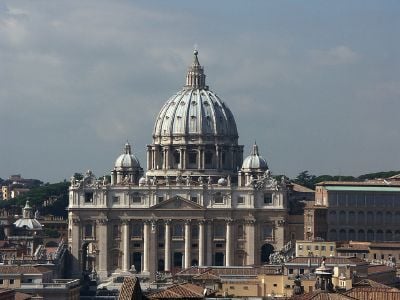
In Italy, the Renaissance style, introduced with a revolutionary but incomplete monument in Rimini by Leone Battista Alberti, was developed, however, in Florence. Some of the earliest buildings showing Renaissance characteristics are Filippo Brunelleschi's church of San Lorenzo and the Pazzi Chapel. The interior of Santo Spirito expresses a new sense of light, clarity, and spaciousness, which is typical of the early Italian Renaissance. Its architecture reflects the philosophy of Humanism, the enlightenment and clarity of mind as opposed to the darkness and spirituality of the Middle Ages. The revival of classical antiquity can best be illustrated by the Palazzo Ruccelai. Here the pilasters follow the superposition of classical orders, with Doric capitals on the ground floor, Ionic capitals on the piano nobile and Corinthian capitals on the uppermost floor.
In Mantua, Leone Battista Alberti ushered in the new antique style, though his culminating work, Sant'Andrea, was not begun until 1472, after the architect's death.
The High Renaissance, as we call the style today, was introduced to Rome with Donato Bramante's Tempietto at San Pietro in Montorio (1502) and his original centrally planned St. Peter's Basilica (1506), which was the most notable architectural commission of the era, influenced by almost all notable Renaissance artists, including Michelangelo and Giacomo della Porta. The beginning of the late Renaissance in 1550 was marked by the development of a new column order by Andrea Palladio. Colossal columns that were two or more stories tall decorated the facades.
Music
In fourteenth-century Italy, there was an explosion of musical activity that corresponded in scope and level of innovation to the activity in the other arts. Although musicologists typically group the music of the Trecento (music of the 1300s) with the late medieval period, it included features which align with the early Renaissance in important ways: an increasing emphasis on secular sources, styles, and forms; a spreading of culture away from ecclesiastical institutions to the nobility, and even to the common people; and a quick development of entirely new techniques. The principal forms were the Trecento madrigal, the caccia, and the ballata. Overall, the musical style of the period is sometimes labeled as the "Italian ars nova."
From the early fifteenth century to the middle of the sixteenth century, the center of innovation in sacred music was in the Low Countries, and a flood of talented composers came to Italy from this region. Many of them sang in either the papal choir in Rome or the choirs at the numerous chapels of the aristocracy, in Rome, Florence, Milan, Ferrara, and elsewhere; and they brought their polyphonic style with them, influencing many native Italian composers during their stay.
The predominant forms of church music during the period were the mass and the motet. By far the most famous composer of church music in sixteenth-century Italy was Palestrina, the most prominent member of the Roman School, whose style of smooth, emotionally cool polyphony was to become the defining sound of the late-sixteenth century, at least for generations of nineteenth- and twentieth-century musicologists. Other Italian composers of the late-sixteenth century focused on composing the main secular form of the era, the madrigal: and for almost a hundred years these secular songs for multiple singers were distributed all over Europe. Composers of madrigals included Jacques Arcadelt, at the beginning of the age; Cipriano de Rore, in the middle of the century; and Luca Marenzio, Philippe de Monte, Carlo Gesualdo, and Claudio Monteverdi at the end of the era.
Italy was also a center of innovation in instrumental music. By the early sixteenth century, keyboard improvisation came to be greatly valued, and numerous composers of virtuoso keyboard music appeared. Many familiar instruments were invented and perfected in late-Renaissance Italy, such as the violin, the earliest forms of which came into use in the 1550s.
By the late-sixteenth century, Italy was the musical center of Europe. Almost all of the innovations which were to define the transition to the Baroque period originated in northern Italy in the last few decades of the century. In Venice, the polychoral productions of the Venetian School, and associated instrumental music, moved north into Germany. In Florence, the Florentine Camerata developed monody, the important precursor to opera, which itself first appeared around 1600. Yet the avant-garde, manneristic style of the Ferrara school, which migrated to Naples and elsewhere through the music of Carlo Gesualdo, was to be the final statement of the polyphonic vocal music of the Renaissance.
ReferencesISBN links support NWE through referral fees
- Brucker, Gene A. Renaissance Florence. University of California Press, 1983. ISBN 9780520046955
- Burke, Peter. The Italian Renaissance. Princeton University Press, 1999. ISBN 9780691006789
- Burckhardt, Jacob. The Civilization of the Renaissance in Italy. Penguin Classics, 1990. ISBN 9780140445343
- Plumb, J.H. The Italian Renaissance. Mariner Books, 2001. ISBN 0618127380
Credits
New World Encyclopedia writers and editors rewrote and completed the Wikipedia article in accordance with New World Encyclopedia standards. This article abides by terms of the Creative Commons CC-by-sa 3.0 License (CC-by-sa), which may be used and disseminated with proper attribution. Credit is due under the terms of this license that can reference both the New World Encyclopedia contributors and the selfless volunteer contributors of the Wikimedia Foundation. To cite this article click here for a list of acceptable citing formats.The history of earlier contributions by wikipedians is accessible to researchers here:
The history of this article since it was imported to New World Encyclopedia:
Note: Some restrictions may apply to use of individual images which are separately licensed.
